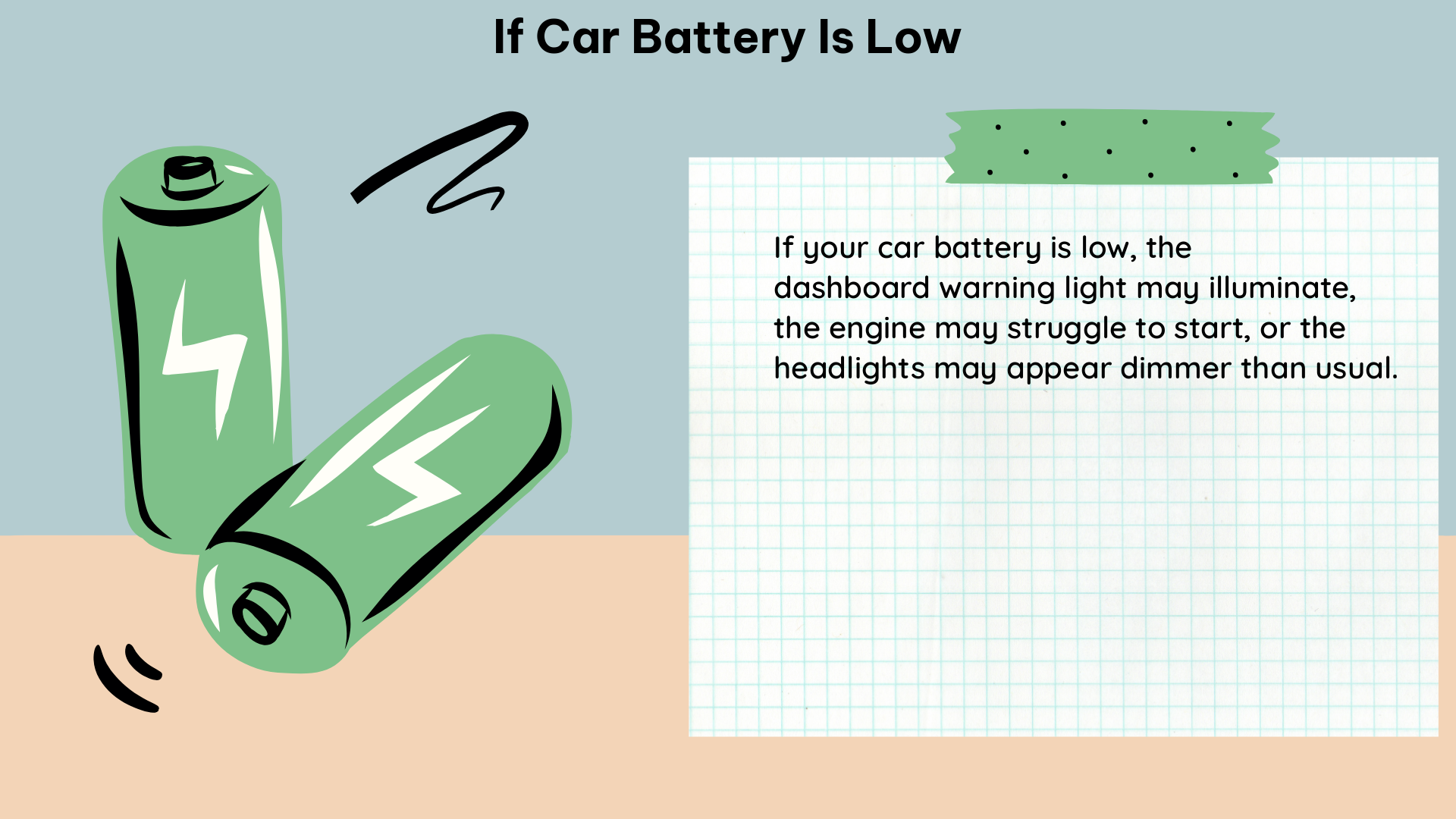When a car battery is low, it can display various voltage readings depending on the state of charge and temperature. Understanding the nuances of a low car battery is crucial for maintaining the overall health and performance of your vehicle. This comprehensive guide delves into the technical details, providing you with a deep dive into the world of car battery diagnostics and management.
Voltage Fluctuations: Unraveling the Mysteries
A fully charged 12-volt car battery with a 45 Ah (ampere-hours) capacity can typically read 12.6 volts. However, the voltage can fluctuate based on various factors. If the battery is left unused for a few days, its voltage can drop to 12.4 volts, indicating a need for charging, even though it may still read 12.6 volts after being used. This inconsistency can be confusing, and the battery status indicator may show different colors based on the battery’s condition.
Battery Status Indicator Colors: A Spectrum of Insights
The battery status indicator colors can provide valuable insights into the battery’s health:
| Color | Meaning |
|---|---|
| Green | The battery is fully charged, and the electrolyte level is high enough. |
| Black or White | The electrolyte level is somewhat depleted, but still high enough. |
| White or Red | The electrolyte level is low, and topping up with deionized water may be necessary. However, this may not be possible for maintenance-free batteries. |
Voltage Alone: An Unreliable Indicator

The voltage of a car battery alone is not a reliable indicator of its health. A voltmeter can show the battery voltage, but it cannot accurately indicate the battery’s capacity or state of health. To determine the battery’s health, a load test is required, which is not an easy thing to build into a car’s circuitry.
Limitations of Voltage Measurements
- Voltage can fluctuate based on factors like state of charge, temperature, and usage patterns.
- Voltage does not provide a comprehensive assessment of the battery’s overall condition, such as its capacity, internal resistance, and ability to hold a charge.
- Voltage measurements can be influenced by factors like the vehicle’s electrical load, alternator output, and wiring resistance, making it challenging to interpret the results accurately.
Advanced Battery Management Systems: Unlocking Deeper Insights
Modern vehicles, particularly electric vehicles (EVs), are equipped with more sophisticated battery management systems that can provide more detailed information about the battery’s health and performance.
Lithium-Ion Battery Monitoring in EVs
Lithium-ion batteries used in electric vehicles have advanced monitoring and diagnostic capabilities, including:
- In-Cycle Measurements: Continuous monitoring of terminal current, voltage, cell temperature, and discharge capacity during operation.
- Cycle-to-Cycle Measurements: Tracking changes in these parameters over multiple charge and discharge cycles.
- Electrochemical Impedance Spectroscopy (EIS): Analyzing the battery’s electrochemical properties to detect changes in internal resistance and other degradation mechanisms.
These advanced features can provide a more accurate and comprehensive assessment of the battery’s health, allowing for better maintenance, optimization, and early detection of potential issues.
Advantages of Advanced Battery Management Systems
- Improved battery life and performance through optimized charging and discharging protocols.
- Enhanced safety by monitoring for potential issues like overheating, overcharging, or internal cell failures.
- Detailed diagnostics and prognostics to predict the remaining useful life of the battery.
- Ability to adapt charging and power management strategies based on the battery’s condition.
- Integration with vehicle systems to provide real-time feedback and warnings to the driver.
Conclusion
In summary, understanding the complexities of a low car battery is crucial for maintaining the overall health and performance of your vehicle. While voltage measurements can provide a general indication of the battery’s state of charge, they are not a reliable indicator of the battery’s health. Advanced battery management systems, particularly in electric vehicles, offer more sophisticated diagnostics and monitoring capabilities to provide a deeper understanding of the battery’s condition and performance.
By staying informed about the latest advancements in car battery technology and management, you can make informed decisions about maintaining, troubleshooting, and replacing your car’s battery, ensuring optimal performance and longevity.
References:
- Battery Status Indicator Confusion
- Why Do Traditional Cars Lack Any Decent Battery Monitoring?
- Advanced Battery Management Systems for Electric Vehicles

The lambdageeks.com Core SME Team is a group of experienced subject matter experts from diverse scientific and technical fields including Physics, Chemistry, Technology,Electronics & Electrical Engineering, Automotive, Mechanical Engineering. Our team collaborates to create high-quality, well-researched articles on a wide range of science and technology topics for the lambdageeks.com website.
All Our Senior SME are having more than 7 Years of experience in the respective fields . They are either Working Industry Professionals or assocaited With different Universities. Refer Our Authors Page to get to know About our Core SMEs.